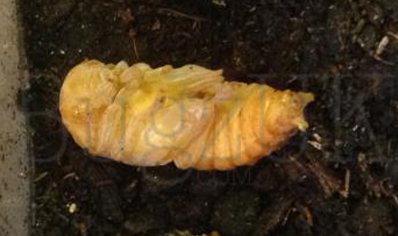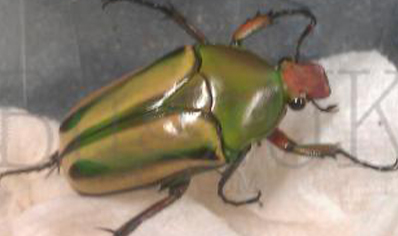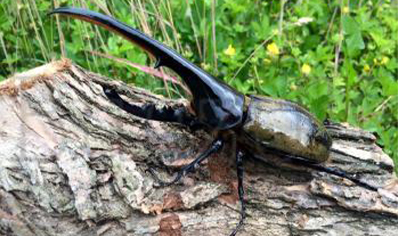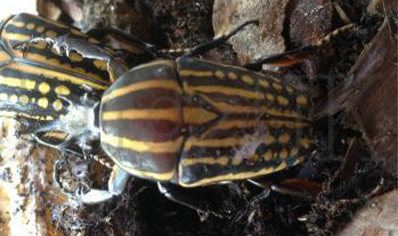- Kingdom: Information not available
- Phylum: Information not available
- Class: Information not available
- Order: Information not available
- Family: Information not available
- Genus: Information not available
- Species: Information not available
Beetles: Dynastes Hercules Septentrionalis
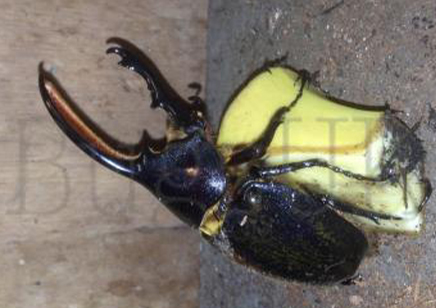
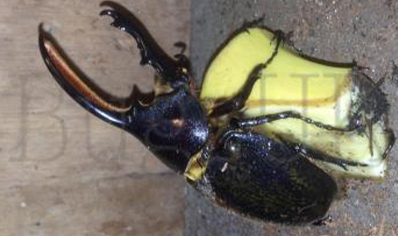
Order Now!
All payments are made through a secure payments system click here for more information.
caresheet by Simon Johnson with thanks
Dynestes Hercules Septrenionalis.
Do you want to handle an insect that can really be called 'huge'? Well, the Hercules beetle is just that. These heavyweight critters are amazingly powerful, with a vice-like grip and claws so strong that Geoff Capes would struggle to prise one off. So how do you go about getting your hands on one of these behemoth beetles?
The prices for adults are just plain 'cray', so the best bet is to get your mitts on larvae. Housing these larvae couldn't be easier, I use a 15-20 litre Really Useful Box and make a substrate out of shredded oak or beech leaves and oak/beech wood. This ratio is about 80/20 leaves to wood. The type of wood is just white rotted oak which I break by hand. The depth of substrate is important as the deeper the substrate the better the humidity is kept. We need to maintain a decent humidity in order for the larvae to grow to their maximum potential. The better the larvae the bigger the males horns. I also add a few bits of protein too in the shape of 'bakers meaty meals'. Once the larvae have grown they will mature and turn a lovely yellow colour and look like they're going to pop! This is now the time that a clear container will be advantageous. Larvae , when they are ready to pupate, will build at the very bottom of the container, this gives us a great 'window' into this amazing sequence. Lifting the box and looking underneath you will notice a circle of dampness, no, the larvae hasn't wet the bed, he's just decided that now the time is right to make a cell and pupate. It is important that you do not tamper wit the larvae at this time, or disturb them. From the bottom of the container you will be able to see the larvae's body, this is the pre-pupa stage and after a month or so the skin will shred and a pupa will emerge, darkening into an orange colour. This is the time that you can remove the pupa and place in an artificial cell. If you so wished.
Another month or so, temperature depending, the pupa will hatch into a Hercules adult, but this isn't the end of it yet for our newly emerged adult likes to sit in their cell for a while and mature. This usually takes a month or so. You'll know when the beetle matures because not only will they have a nice patterned 'shell' but also they will scurry about looking for food. It is essential that you now feed the adults, I recommend banana cut in half. It's the best food there is. Once the adults have fed things turn romantic and the Hercules will soon be playing mummies and daddies. Before the mating has occurred I try to house the adults in a Really Useful Box with a depth of 40 cm plus, I use the 65 litre ones and I fill it with substrate and include some of the old substrate that the adults were reared in as larvae. This is to trigger egg laying. The bottom layer of, say, 10-15cm is compressed heavily to give the female a base to lay her eggs in. All you've got to do now is wait and keep giving them fresh 'nana every day, and , believe me, they'll eat plenty! It might be worth mentioning here that the beetles, all beetles for that matter, have difficulty in getting themselves righted again once they fall on their backs, so I like to add a lot of sticks and pieces of wood to stop this happening. I leave no space in the container where the beetle can 'capsize' and not right itself.
The females will be conspicuous by their absence and they will be busy popping out eggs, they start off small, oval and pure white but soon swell into a sphere and progressively turn a brown colour. After several weeks the baby larvae hatch and the cycle starts once more.

